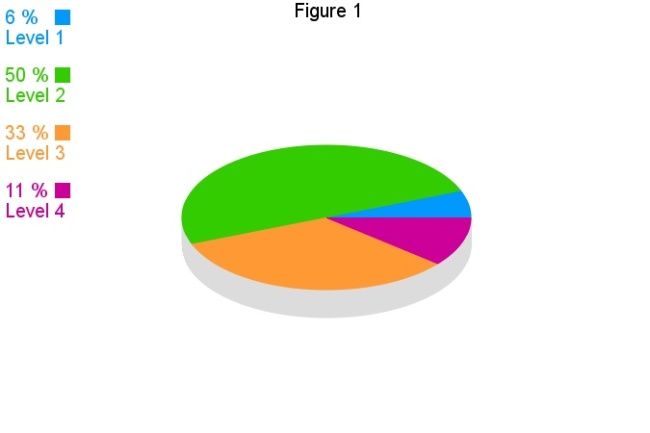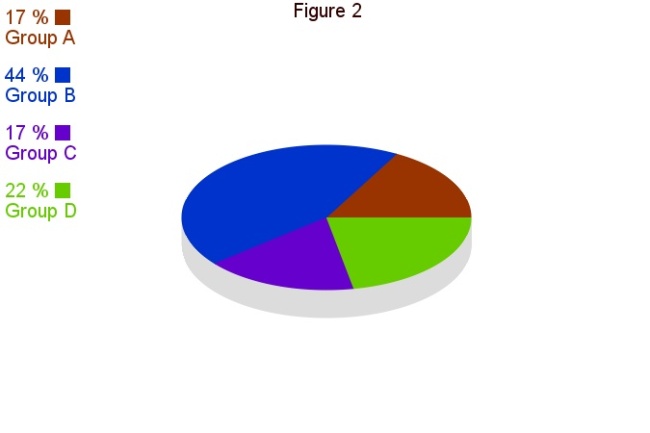This week I sent out a survey to my co-workers at Lakewood High School (LHS) about their use of technology in the classroom. The survey was created to gain an understanding of how they use technology in their classroom, how they would like to use technology, and what they desire in a professional development meeting about technology. The three questions they were asked were adapted from Sara Beauchamp (2013) and are as follows.
- “Briefly describe how you are currently using technology in your professional practice”
- “How, or in what ways, would you like to change or improve your technology integration practices, if at all?”
- “What type of technology-focused professional development would you find most useful?”
The survey received 18 responses. When reviewing the responses from my co-workers, I decided to categorize my data to simplify it. All answers were separated into one of four categories. The responses to the first question, “Briefly describe how you are currently using technology in your professional practice,” were broken up into the following
- Level 1: Minimally used technology used strictly by teacher, such as Internet, email, and input of grades.
- Level 2: Technology use includes level 1 forms of technology and is mostly used by teacher and infrequently by students. Technology use includes a projector, presentation software (like PowerPoint), showing YouTube videos, and/or calculator use.
- Level 3: Includes level 1 and level 2 forms of technology in addition to student use of laptops, computers, iPads for research and software use.
- Level 4: Students primarily use technology in the classroom and include the forms of technology used in the previous three levels in addition to one or more of the following; video production, photo editing, or Edmodo.
Figure 1 demonstrates the categorization of responses for question one.
While looking at the responses to the first question, I was not surprised by the answers I received. LHS has a media center with Macintosh desktops. We also have access to two media carts with 30 MacBooks in each and Flip cameras. In addition, each teacher is provided a MacBook Pro, an Elmo or Smart Board, and a projector. We have a decent amount of technology at our fingertips, so I would hope that the teachers at LHS are using it minimally. Although it would be nice to see more teachers have the student’s use technology, it’s not easily made possible because we do not have a computer for every student. I also expected that none of the LHS teacher were implementing a Flipped classroom because we have not had a lot of training in technology, particularly since our technology budget has been drastically cut; we can not afford to keep a tech expert at the high school.
The responses to the second question, “How, or in what ways, would you like to change or improve your technology integration practices, if at all?”, were broken up into the following groups.
- Group A: No change was desired
- Group B: More student use of computers, laptops, iPads, tablets, smartphones, or other hands-on technology.
- Group C: Implementing a Flipped classroom.
- Group D: Varied answers; more internet use, more applicable software for subject areas, and more online assessments.
Figure 2 demonstrates the categorization of responses for question two.
Although the answers to the first question did not surprise me, I was a little shocked by the responses to question two for a few reasons. First, I was surprised to find that some teachers did not at all want to change the way they applied technology in the classroom. I imagine, for them, it’s just easier to keep doing what you are doing instead of having to learn something new. I was somewhat impressed that the largest group was B, because this means that teachers realize that their students should be experiencing more technology and it could enhance their learning. I was doubly impressed that there were teachers interesting in attempting a Flipped classroom. I did not expect to see this because there has not been a huge push for it at our school.
The responses to the third question, “What type of technology-focused professional development would you find most useful?”, were broken up into the following groups.
- Group W: Wants to focus on learning how to incorporate online homework and assessments.
- Group X: Wants to focus on learning methods of applying social media and creativity in assignments.
- Group Y: Wants more training on using the latest technology as well as iPads, smartphones, and Smart Boards.
- Group Z: Wants training broken up into groups based on specific wants
Figure 3 demonstrates the categorization of responses for question three.
There was a fairly even spread of responses to this question. To me this suggests that each classroom is unique and different teachers need different technological tools to hone their craft. It seems, to meet the needs of the majority, it would be a good idea to have technology-based professional development divided into different groups with each presenter teaching their group to learn something specific. In essence it would be like a conference with many workshops; the teacher would have to pick the workshop they wish to attend. This would give the teacher autonomy and therefore motivation to learn.
In summary, it appears that the vast majority of teachers are the primary users of technology, however, the majority of teachers want to put technology into the hands of their students; many teachers would like a classroom set of computers or iPads. It seems that most teachers know what they “should” be doing with technology, but many don’t. Perhaps a little more training via professional development would give them the confidence they need to accomplish this. Lastly, most teachers seem motivated to learn something new about technology, but they each have very specific needs. Having professional development run like a conference with multiple workshops would likely be most useful to the staff.
Reference
Beauchamp, S. (2013). Create. Retrieved from https://angel.msu.edu/section/default.asp?id=US13-CEP-812-733-97CJG2-EL-14-204





Thanks for this post, Kim! It was interesting to see the broad range of wants and needs among your community of practice. 18 responses is a really good number for this time of the year! Kudos to you! I think that overall you have given us the true snapshot of what is really happening in schools–teachers are at varying degrees of knowledge and usage, their goals vary among each other, they aren’t particularly sure exactly what they really want and when it comes to professional development, they really want a little bit of everything. This is really a wicked problem in and of itself, isn’t it? Your snapshot does inspire hope however. I am happy to see that a good number of your group wants to learn–to challenge themselves to try new things and push beyond what they are doing today. Good work here–thanks for the visuals–very helpful and as usual, great writing!